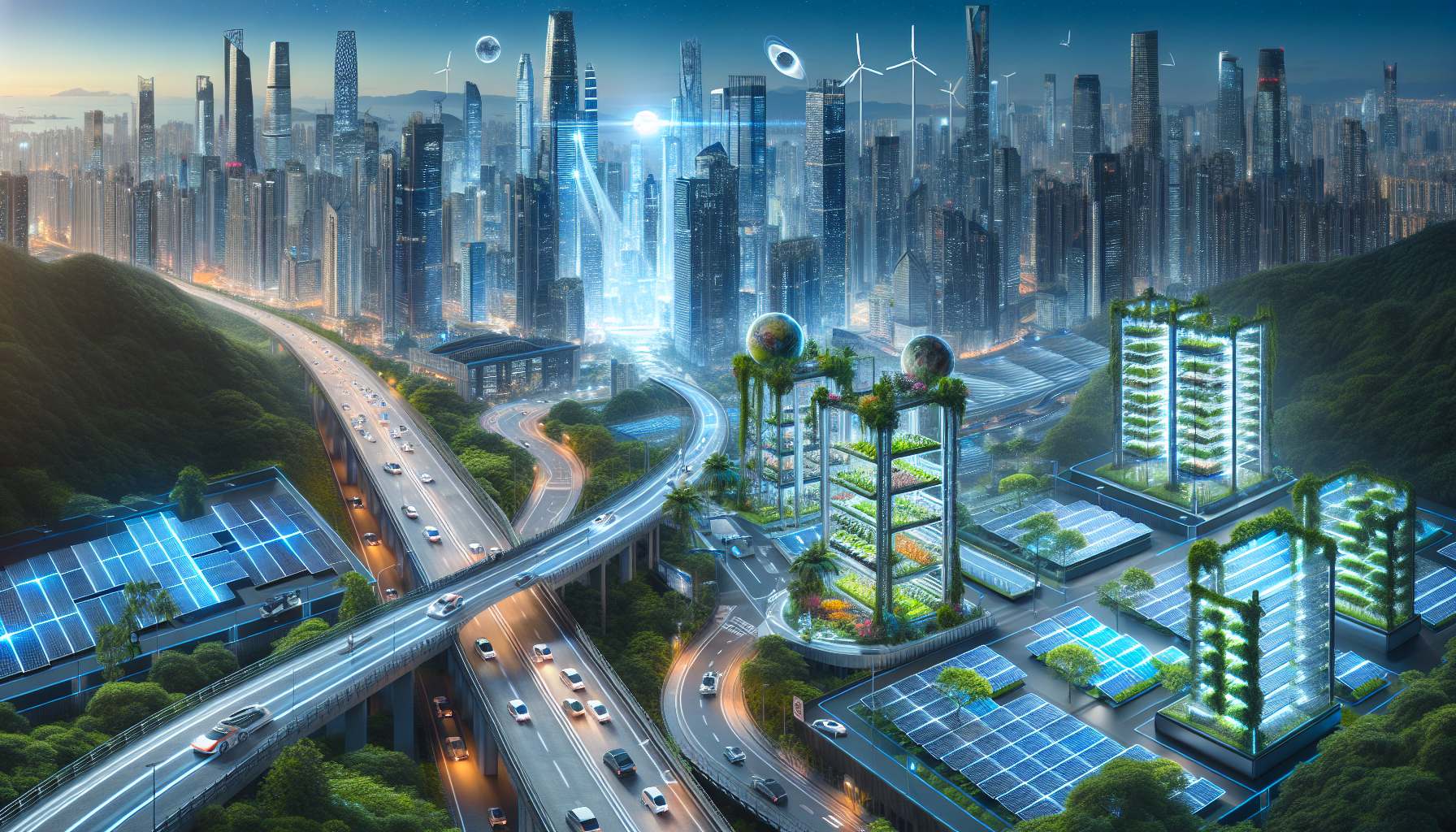Advertisements
Discover in this content the Asian technological innovations that are revolutionizing the sustainability scenario. With the growing global interest in more eco-friendly practices, Asia has stood out for its creative and efficient solutions to preserve the environment. From renewable energy to sustainable public transportation, companies and governments in the region are increasingly investing in green alternatives.
With a particular focus on reducing carbon footprint and minimizing environmental impacts, Asia has stood out for its advancements in sustainable technology. With innovative projects and strategic partnerships, the continent is becoming an example of how it is possible to reconcile economic development with environmental preservation. In this article, we will explore some of the key initiatives that are shaping a greener future in the region.
Whether through government incentives, private investment or individual action, Asian sustainable technology is paving the way for a more conscious and responsible world. By implementing innovative practices and creative solutions, companies and organizations in the region are showing that it is possible to build a more sustainable future for generations to come. Stay tuned to learn more about the trends and developments that are transforming the sustainability landscape in Asia.
Advertisements
Asian innovations in sustainable technology
Integrated solar energy
China has stood out in the development of sustainable technologies, being a world leader in the production of solar panels. In addition, Japanese companies have invested in projects to integrate solar panels into urban buildings, enabling the generation of clean energy in a more efficient and aesthetically pleasing way.
- Solar panels integrated into building facades;
- Solar energy systems on the roofs of commercial buildings;
- Solar panels in urban parks, generating clean energy for lighting and public equipment.
Efficient electric mobility
South Korean companies have been at the forefront of developing efficient and affordable electric vehicles, reducing dependence on fossil fuels and promoting the reduction of carbon emissions. In addition, India has invested in bike-sharing systems and electric scooters, encouraging the use of sustainable modes of transport in urban areas.
- Development of more efficient and long-lasting batteries for electric vehicles;
- Expansion of fast charging networks for electric vehicles in urban centers;
- Implementation of policies to encourage the purchase of electric vehicles, such as tax exemptions and government subsidies.

Given the innovative initiatives and significant advances in sustainable technology in Asia, it is possible to envision a promising and inspiring future for the entire planet. The region, which is already recognized for its strong capacity for adaptation and innovation, is leading the transformation towards a more sustainable development model. With the growing commitment of companies, governments and citizens to adopt eco-friendly practices, Asia is becoming an example to be followed in terms of environmental responsibility and how technology can be an ally in the preservation of natural resources.
One of the biggest drivers of this transition to a greener economy is collaboration between Asian countries. Joint initiatives such as developing renewable energy technologies, improving energy efficiency and reducing carbon emissions are shaping a future where sustainability is a priority for all. Countries such as China, Japan, South Korea and India are at the forefront of this green revolution, investing in solutions that not only meet their own growth needs, but also serve as examples of best practice for the rest of the world.
Advertisements
China, for example, has invested heavily in renewable energy sources such as solar and wind power, and is seeking to become a global leader in the production and consumption of clean technologies. India, for its part, has focused on expanding its solar energy infrastructure and improving the efficiency of water resources, a vital resource for its growing population. Japan and South Korea are focused on developing advanced electric mobility technologies and more sustainable urban systems, such as “smart cities,” which use artificial intelligence and sensors to optimize resource use and reduce environmental impact.
Furthermore, public-private partnerships have played a crucial role in accelerating this transition to a more sustainable future. Innovative technology companies and startups are creating solutions that not only meet market needs but also respect environmental limits. From creating new biodegradable materials to developing more efficient production systems, these advances are helping to reduce the ecological footprint of industries and improve the quality of life in Asian cities.
These technological innovations are also being applied in areas such as transportation and agriculture, with the aim of minimizing the environmental impacts of these industries. The introduction of electric and hybrid vehicles in major Asian cities is helping to reduce greenhouse gas emissions, while smart agricultural technologies are enabling more efficient and sustainable food production with less waste of natural resources.
Investment in research and development has also been a key factor in the success of these initiatives. Governments and companies are allocating significant resources to areas such as artificial intelligence, biotechnology and nanotechnology, with the aim of creating more efficient and innovative solutions to environmental challenges. Collaboration between universities, research centers and the private sector is generating concrete results and contributing to a green revolution that is spreading throughout the region.
Conclusion
In a scenario where concern for the environment is increasingly latent, Asian innovations in sustainable technology are shaping a greener and more promising future. China stands out in the production of solar panels, while Japan invests in the integration of these panels into urban constructions, making clean energy generation more efficient and aesthetically pleasing.
In addition, South Korean companies have been developing efficient and affordable electric vehicles, contributing to reducing dependence on fossil fuels and carbon emissions. In India, electric bike and scooter sharing systems are encouraging the use of sustainable modes of transport in urban areas.
With the expansion of fast-charging networks, policies to encourage the purchase of electric vehicles and the development of more efficient batteries, Asia is leading the way towards a more sustainable and environmentally friendly future. These innovations not only contribute to preserving the environment, but also pave the way for a greener and more prosperous economy. It is clear that Asian sustainable technology is revolutionizing the way we relate to the planet, showing that it is possible to reconcile development and environmental preservation.




